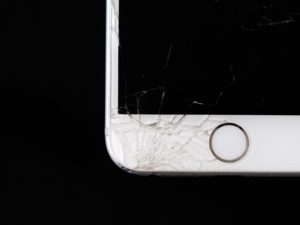Latest Popular Smartphones Significantly Dip in Drop Test Performance
November 22nd, 2017 by admin
After years of improving smartphone glass durability, a shift design is bringing back the perils of dropping the device only to discover the glass has cracked on impact. The newly released iPhone 8 and iPhone X aren’t doing well in drop tests, with screens breaking relatively easily. A “drop test” measures the durability of a device by dropping it on a hard surface and gauging the damage.
However, this isn’t a sign that Apple has made a design flaw, but rather a reflection of industry design trends taking away protection where material durability improvements can’t compensate. The full-front-screen-equipped Samsung Galaxy S8 performed abysmally in drop tests as well.

On Smartphone Productivity
Cutting-edge smartphones are a great way to increase productivity in the workplace as faster performance and new features lend themselves to better problem-solving. However, implementing a device that is prone to breaking means employees will hesitate to use it over damage fears or won’t use it at all because it’s broken.
Why is this Happening?
Two design trends can take the blame for screen cracking:
- Newer phones are using glass on the rear of the device in addition to the front to enable wireless charging. This doubles the amount of glass on the device.
- The “bezel wars,” or the push to shrink borders and increase screen size, are eliminating the amount of material on the device itself that can absorb impact damage.
While modern smartphones are using increasingly durable glass, the increase in total glass used and lack of side protection make the devices vulnerable to fall damage. However, the more durable glass is doing very well in scratch and bend tests.
The Dollars and “Sense” of Repairs
The good news is the glass is a repairable component; the bad news is the repairs can quickly approach device replacement costs. There are three options for a repair; which one to go with varies on experience and severity of the damage:
- Manufacturer Repair or RMA
- Independent Repair Shop
- DIY
The cost and complexity of a front vs. rear glass repair can vary greatly depending on the phone. For example, replacing the rear glass on the Galaxy S7 will run a person about $70 professionally or can be done for around $20 in 45 minutes by a modestly skilled DIYer. Comparatively, a Galaxy S7 front screen and glass repair runs about $190 from an independent shop. The iPhone X is different, with Apple charging $279 for a front display replacement and $549 for a rear glass replacement. The front screen replacement costs are in line with each other, while the rear glass replacement costs are dramatically different.
How can I Protect my Investment?
Fortunately, your business can take a few safeguards to avoid having to replace the device:- Get a protective case and require its use
- Get an extended warranty or device care package
Is your business using the right technology for the job and the right accessories to get the most out of those devices? The IT Consulting experts at ATS can help your business increase productivity by getting the most out of tech. Contact us today!

